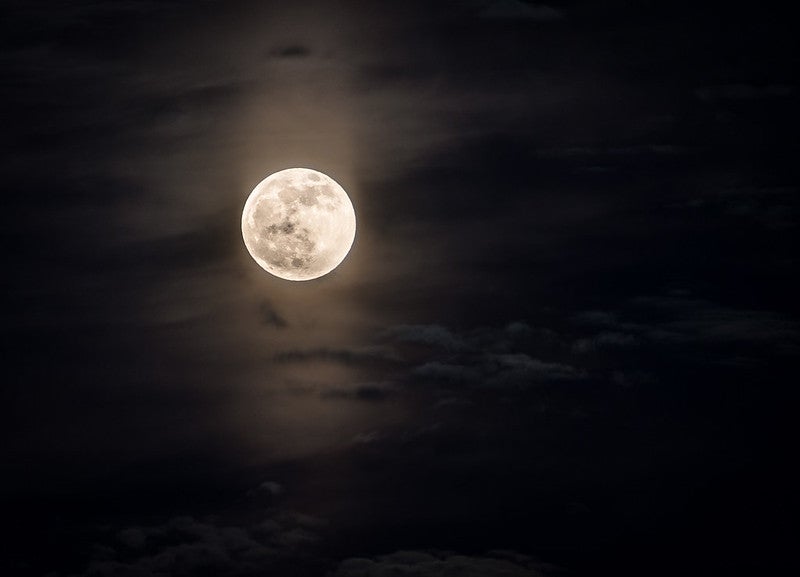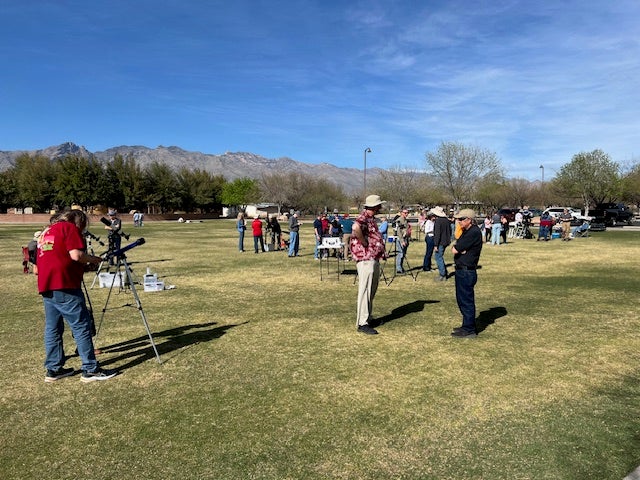
When September’s Full Harvest Moon rises above the horizon Friday evening, it will be the final big, bright Super Moon of the year — and the last for nearly another calendar year. As the leaves begin to change and the nights begin to cool off, here’s what you’ll see when you step outside and why.
What is a Super Moon?
Super Moon is the unofficial term for a Full Moon that occurs near perigee, the closest point to Earth in the Moon’s orbit around our planet. Because our satellite’s orbit is not completely circular, it approaches slightly closer and subsequently swings slightly farther out throughout its 27.3-day orbit.
The lunar month — the time it takes for the Moon to go from New to Full to New again, is slightly longer than its orbit: 29.5 days. Because these two periods are not quite the same, they don’t always line up. But sometimes they do, resulting in a Full Moon that occurs when the Moon is closest (or nearly closest) to Earth. We call that a Super Moon.
The details on September’s Super Moon
Astronomers consider a Super Moon to be a Full Moon that occurs when the Moon’s distance is 90 percent or more of the distance from its farthest point, apogee, to its closest point, perigee.
This month, the Moon reaches perigee this evening at 8:59 P.M. EDT, when it will sit 223,269 miles (359,317 kilometers) away. Less than 12 hours later, Full Moon occurs at 5:58 A.M. EDT Friday morning, when our satellite is 224,658 miles (361,552 km) from Earth, or within about 96 percent of perigee, according to Fred Espenak’s AstroPixels page. At that time, our satellite will appear some 33.1′ across in the sky, slightly larger than its average size of 31′.
Seeing the Super Moon
Early risers on Friday can catch the Moon sinking toward the western horizon in the growing dawn, setting shortly after sunrise. But truly the best time to observe the Super Moon is beginning shortly after moonrise, which occurs roughly around the time of sunset during the Full phase. When Full, the Moon is visible from sunset to sunrise, so whether you’re able to look up right after sunset, catch the Moon in the nighttime sky, or see it early in the morning before dawn, you’ll still get a chance to observe the Super Moon.
Below are the times for sunrise and sunset on Friday, September 29, in local time from 40° N 90° W. The Moon’s illumination is given at 12 P.M. local time from the same location.
Sunrise: 6:54 A.M.
Sunset: 6:46 P.M.
Moonrise: 7:06 P.M.
Moonset: 7:01 A.M.
Moon Phase: Full
Although a Super Moon is slightly larger in the sky than average, the difference in size is not something the naked eye can pick up. However, astrophotographers often compare images of the Super Moon to those taken when Full Moon occurs at apogee, or the farthest point from Earth. The size difference between these two occurrences can be up to 14 percent.
Similarly, it’s difficult for the human eye to pick up the difference in brightness between an average Full Moon and a Super Moon; nonetheless, many people do notice the Full Moon appears slightly brighter when it is closer to Earth. This Friday, the Full Moon will appear just over 1 percent brighter than it does on average.
The last Super Moon of 2023
This year, we’ve been treated to a total of four Super Moons: one in July, two in August, and this week’s in September. After this month, the next Super Moon won’t occur until August 2024 — and according to Espenak’s page, it will be the first of a similar succession of four Super Moons, running from August through November.
Although Super Moons may not appear noticeably huge or blindingly bright to the eye, they’re still an excellent excuse to get out under the nighttime skies and observe or photograph Earth’s only satellite. The editors at Astronomy would love to see and share your Super Moon shots — you can send them to us by emailing TIFF or JPG files to readergallery@astronomy.com.









